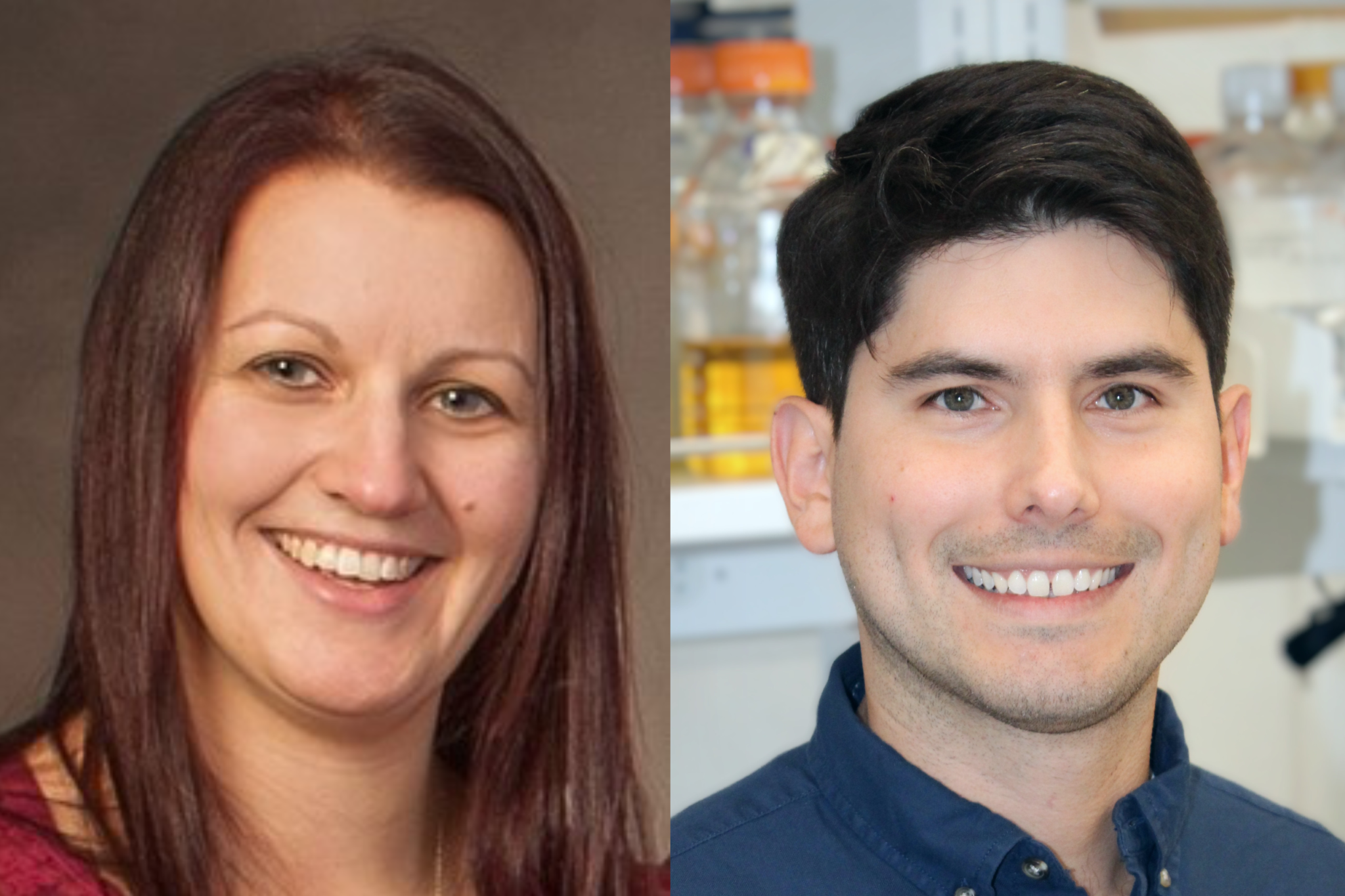Yale-Stanford collab develops novel synthetic tRNA engineering approach
Researchers at the two schools expanded genetic code through insertion of selenocysteine amino acids into tRNAs in a new targeted approach.

(Left) Cheryl Struss Photography, (Right) Sarai Ruiz-Nieves
Yale researchers, in collaboration with scientists from Stanford, Columbia and Sweden have engineered synthetic tRNAs that are able to effectively introduce selenocysteine amino acids into any protein.
Transfer RNAs, or tRNAs, are part of the system that brings genetic information from its storage location in the DNA to its construction site in the ribosomes where proteins are synthesized.
While humans typically use 20 amino acids in our proteins, the Dieter Söll Lab has optimized the use of a 21st amino acid: selenocysteine.
By genetically engineering tRNA, researchers — including Yale’s Natalie Krahn and Oscar Vargas-Rodriquez — are able to manipulate the properties of the protein that the ribosomes produce.
“The overarching goal of the lab is to create tools to change the meaning of the genetic code,” Vargas-Rodriquez told the News. “We can introduce new chemistry to the code and create proteins that are not naturally available.”
The team’s work was published in Nucleic Acids Research on July 27th.
The ribosome can be thought of as a machine for reading genetic code from tRNAs, according to Joseph Puglisi, a professor of structural biology at Stanford. Transfer RNA molecules are shaped like an L, and must fit into specific crevices in the ribosome.
If the L-shapes are distorted, the tRNAs get stuck, and the ribosome must reshape itself to continue protein synthesis. It is as if the cogs in a machine do not quite fit.
Krahn was able to do a single point mutation in the tRNA to remove this roadblock, transforming a cysteine amino acid into an adenine amino acid. This provided for seamless protein synthesis and a new method for creating selenocysteine-containing proteins.
The Puglisi lab at Stanford was able to facilitate this genetic engineering by visualizing where the L-shaped tRNAs got stuck in the ribosome machinery.
“Our small contribution was to solve the three-dimensional structures of the tRNAs when they were bound for the ribosome, and what we saw is that they fold up into the right structure despite their novel features, but there is a bit of a clash between parts of the tRNA and parts of the ribosome,” Puglisi said.
This engineering process of a single nucleotide mutation is simple to perform in the lab. It can be applied to insert selenocysteine into a wide variety of proteins where it may not be, altering chemical properties and function.
“Applications are very broad; you can make synthetic proteins, “ Krahn said. “For example, we have made hydrogenase. These are hypothesized to be used in biological energy production, but there are issues with it: they can be oxygen sensitive and they are not very good at producing hydrogen. What we found is we can actually make hydrogenase that is very oxygen-tolerant, and is capable of doing its job in an aerobic environment, which is not normally the case.”
Selenoproteins also occur naturally. Humans have 25 selenoproteins, many of which are necessary for the body to function, according to Krahn. If these proteins have mutations or one has a low selenium diet, it can reduce selenoprotein levels, causing many diseases. Low selenoprotein levels have been associated with COVID, cancer and neurological diseases, Krahn said. However, it is unknown whether the low selenoprotein levels are causing the diseases, or if they are only a symptom.
The tRNA technology allows researchers to create selenoproteins in the lab, a task previously infeasible. This allows scientists to further study human systems that involve selenoproteins, and determine the root cause of their association with complex diseases.
According to Puglisi, developing the selenocysteine translation system was truly a team effort.
“It was a fun project because it allowed us to contribute our structural and mechanistic insights into really what was Dieter and Natalie’s beautiful work in discovering and characterizing these tRNAs,” Puglisi said.







